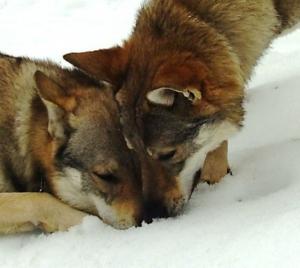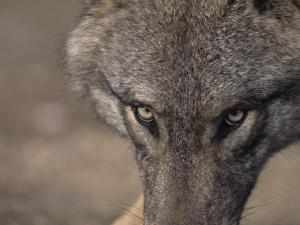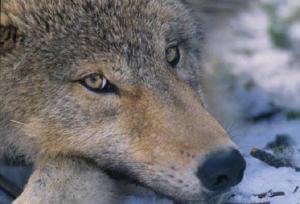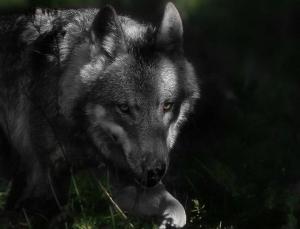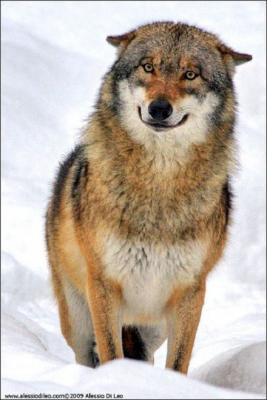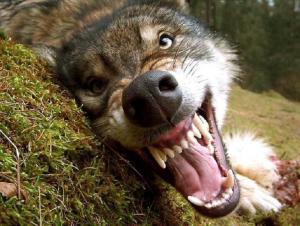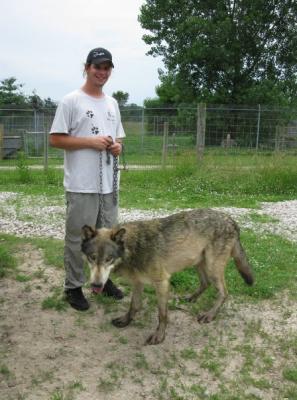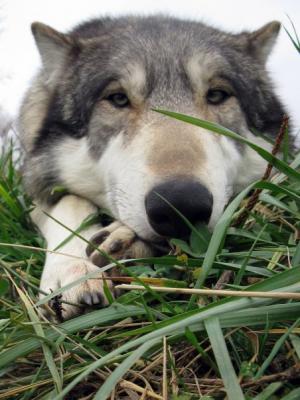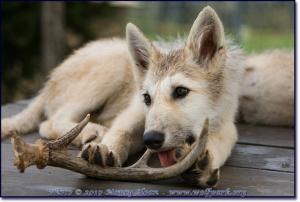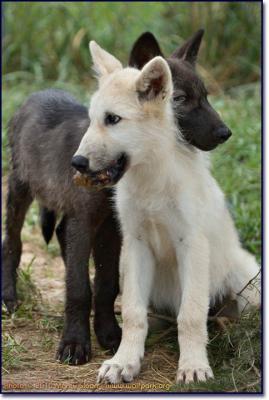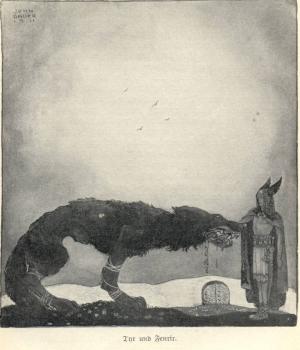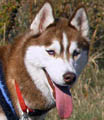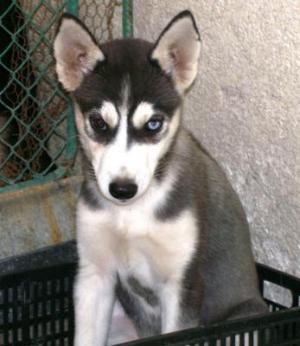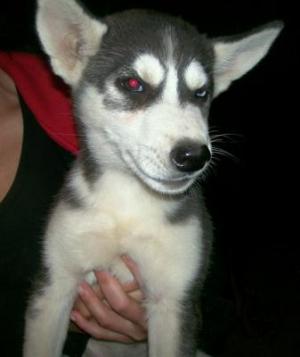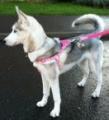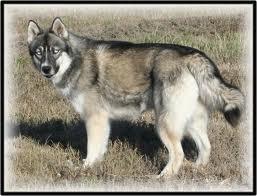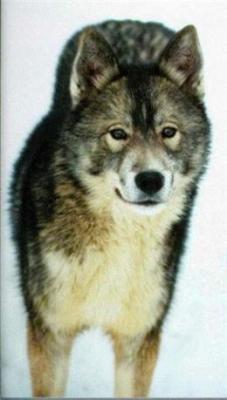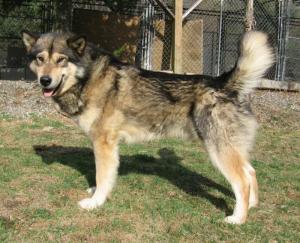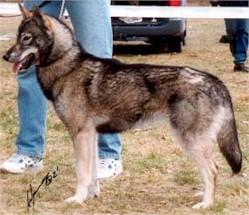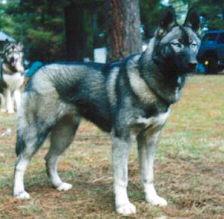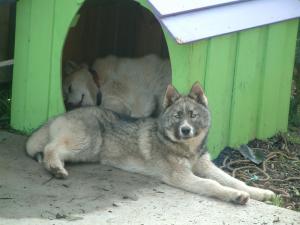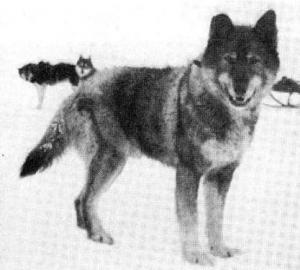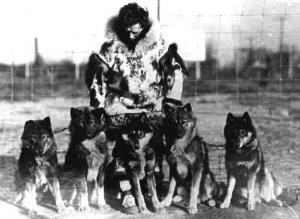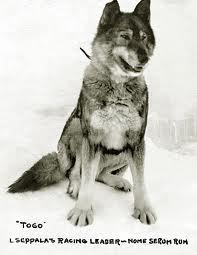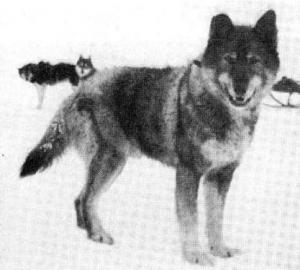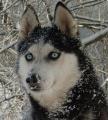Хъскита и вълци
#382

Публикувано: 08 February 2012 - 03:02 AM
Между другото, гените които определят сивия цвят при вълка и при НОК са едни и същи и се обозначават с Aw -като w е съкращение от wild - див!
#383

Публикувано: 08 February 2012 - 10:54 PM
#384

Публикувано: 08 February 2012 - 11:09 PM
 FANFAN, в 08 February 2012 - 10:27 PM, написа:
FANFAN, в 08 February 2012 - 10:27 PM, написа:
Благодаря!
Май не само аз си мисля, че вълците имат общо с НОК. Вижте какво открих:
http://grayfenris.blogspot.com/
#385

Публикувано: 08 February 2012 - 11:13 PM
#386

Публикувано: 09 February 2012 - 05:55 AM
DNA evidence:
mtDNA evidence suggests that African dogs, such as the Basenji, have a high level of genetic diversity
Before DNA was used, researchers were divided into two schools of thought:
Most supposed that these early dogs were descendants of tamed wolves, which interbred and evolved into a domesticated species.
Other scientists, while believing wolves were the chief contributor, suspected that jackals or coyotes contributed to the dog's ancestry.
Carles Vilà, who has conducted the most extensive study to date, has shown that DNA evidence has ruled out any ancestor canine species except the wolf. Vilà's team analyzed 162 different examples of wolf DNA from 27 populations in Europe, Asia, and North America. These results were compared with DNA from 140 individual dogs from 67 breeds gathered from around the world. Using blood or hair samples, DNA was extracted and genetic distance for mitochondrial DNA was estimated between individuals.
Based on this DNA evidence, most of the domesticated dogs were found to be members of one of four groups. The largest and most diverse group contains sequences found in the most ancient dog breeds, including the dingo of Australia, the New Guinea Singing Dog, and many modern breeds, like the collie and retriever. Other groups such as the German Shepherd Dog showed a closer relation to wolf sequences than to those of the main dog group, suggesting that such breeds had been produced by crossing dogs with wild wolves. It is also possible that this is evidence that dogs may have been domesticated from wolves on different occasions and at different places. Vilà is still uncertain whether domestication happened once–after which domesticated dogs bred with wolves from time to time–or whether it happened more than once.
A 2002 study by Peter Savolainen et al. identified mitochondrial DNA evidence suggesting a common origin from a single East Asian gene pool for all dog populations. In 2010, a study by Bridgett vonHoldt et al., using a larger data set of nuclear markers, pointed to the Middle East as the source of most of the genetic diversity in the domestic dog and a more likely origin of domestication events. Z-L Ding et al. (2011) presented new Y-chromosome data from 151 dogs sampled worldwide, again pointing to a single domestication region south of the Yangtze river. The convergence of mtDNA and Y-chromosome variability in this region, the authors propose, indicate that a large number of wolves were domesticated, probably several hundred, as part of a sustained cultural practice.
The most puzzling fact of the DNA evidence is that the variability in molecular distance between dogs and wolves seems greater than the 10,000–20,000 years assigned to domestication. Yet the process and economics of domestication by humans only emerged later in this period in any case. Based upon the molecular clock studies conducted, it would seem that dogs separated from the wolf lineage approximately 100,000 years ago. Although clear evidence for fossil dogs becomes obscure beyond about 14,000 years ago, there are fossils of wolf bones in association with early humans from well beyond 100,000 years ago. Tamed wolves might have taken up with hunter-gatherers without changing in ways that the fossil record could clearly capture. The influx of new genes from those crossings could very well explain the extraordinarily high number of dog breeds that exist today, the researchers suggest. Dogs have much greater genetic variability than other domesticated animals, such as cats, asserts Vilà.
Once agriculture took hold, dogs would have been selected for different tasks, their wolf-like natures becoming a handicap as they became herders and guards. Molecular biologist Elaine Ostrander is of the view that "When we became an agricultural society, what we needed dogs for changed enormously, and a further and irrevocable division occurred at that point." This may be the point that stands out in the fossil record, when dogs and wolves began to develop noticeably different morphologies.
A 2009 study of African dogs found a high level of mtDNA diversity. The authors suggest that a new view of the domestication of the dog may be needed. A study by the Kunming Institute of Zoology found that the domestic dog is descended from wolves tamed less than 16,300 years ago south of the Yangtse river in China. An older report said that all dog mitochondrial DNA came from three wild Asian female wolves.
Origin of dogs traced
В упражненията по кинология в университета говорихме за проследяването на митохондриалната ДНК на всички кучета до 3 азиятски вълчици (споменато в последното изречение на текста) и ми се стори доста интересно като информация. Причината да стигнат до това заключение, е че митохондриалната ДНК (mtDNA) се предава от майка на дъщеря непроменена. Подобно изследване е направено и с хора като са доказали че всички ние произлизаме от шепа жени от нейде си

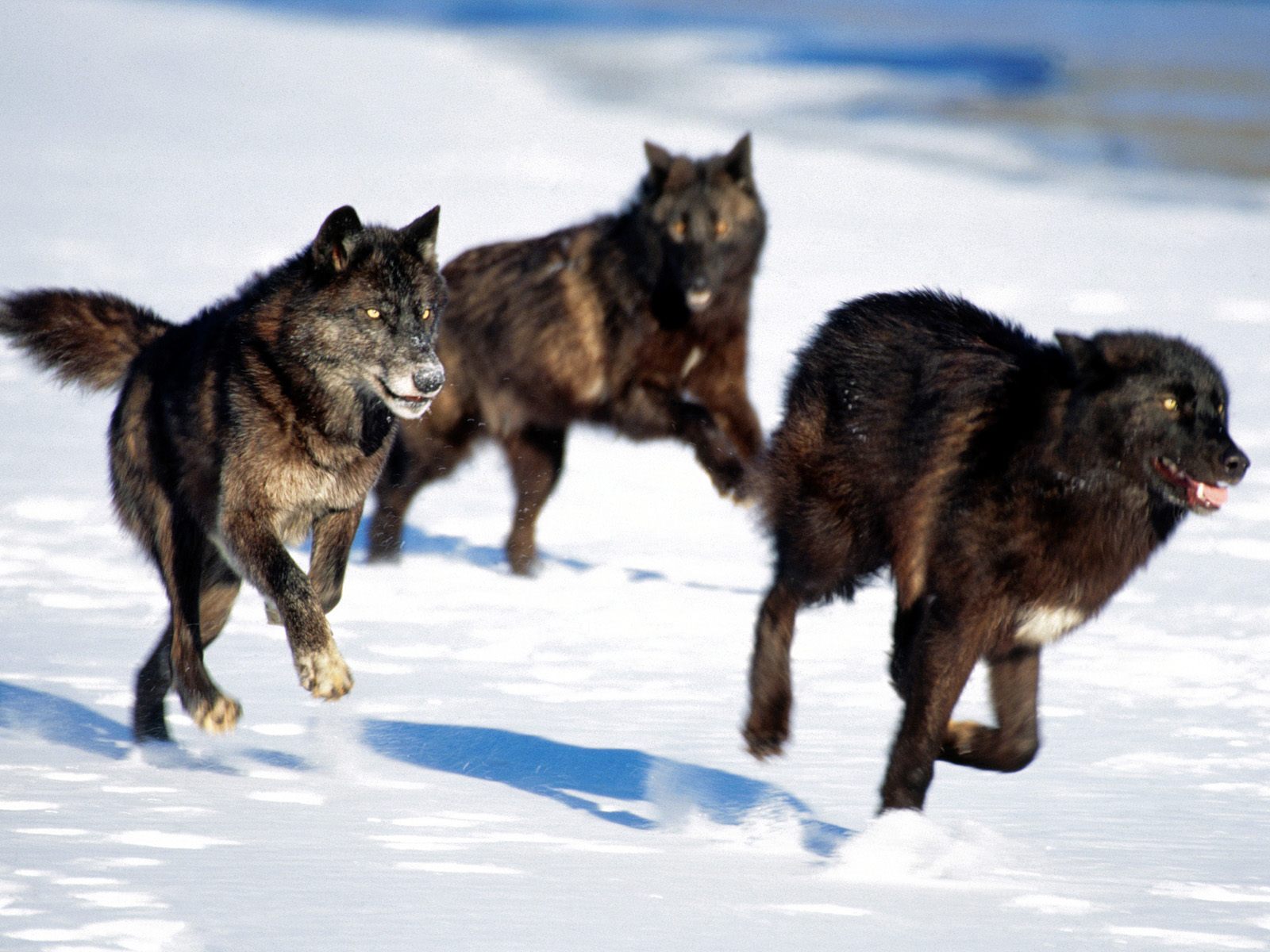


Cave canem, te necet lingendo - Beware of the dog, he may lick you to death...
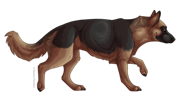
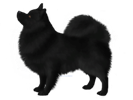
#388

Публикувано: 09 February 2012 - 08:59 AM
 Георги Симеонов, в 08 February 2012 - 08:54 PM, написа:
Георги Симеонов, в 08 February 2012 - 08:54 PM, написа:
Нещо на вълчетата, много са им големи ушите
Да, прав си - на хъскитата на тая възраст също са им толкова големиии ушите
Жалко, че съм на работа и нямам снимки да ти покажа моите пък какви бяха грозни и ушати
#389

Публикувано: 09 February 2012 - 03:56 PM
 ultima, в 09 February 2012 - 05:55 AM, написа:
ultima, в 09 February 2012 - 05:55 AM, написа:
Не зная за кой университет говорите и кой е ученият, който Ви води занятията, но когато се говори за миналото, трябва да се следи постоянно настоящето. Последната поместена информация в научния печат е от 7 февруари, 2012 г.
Да, вярно е, че проучванията, свързани с произхода, освен на базата на палеонтологически находки, се базират именно на mDNA, но нещата не са толкова елементарни.
Ще Ви поместя малка извадка от последната научна публикация в Science Daily, а този, който Ви е казал, че кучетата произлизат от 3 азиатски вълчици да си свери часовника !!!
In other words, man's best friends may have originated from more than one ancient ancestor, contrary to what some DNA evidence previously has indicated. "Both the Belgian find and the Siberian find are domesticated species based on morphological characteristics," said Greg Hodgins, a researcher at the University of Arizona's Accelerator Mass Spectrometry Laboratory and co-author of the study that reports the find.
#391

Публикувано: 09 February 2012 - 08:44 PM
#393

Публикувано: 10 February 2012 - 02:15 PM
#394

Публикувано: 10 February 2012 - 03:07 PM
Аз виждам - различна муцуна, различни очи, различни уши, различно телосложение, различна козина.
Да не говорим за движенията! Твойто нали е специално и не го слагам в графата, обаче "шоу" екземплярите с тия паднали задници и краци, които се мятат до небето - ужас. Те и при хъскитата се опитат това движение да го котират, а за мен това е далеч от нормалното.
Между другото, аз не намирам и общо между хъскито и вълка, освен до известна степен - цветово.
#395

Публикувано: 10 February 2012 - 03:13 PM
 xael, в 10 February 2012 - 03:07 PM, написа:
xael, в 10 February 2012 - 03:07 PM, написа:
#396

Публикувано: 10 February 2012 - 05:01 PM
 nushcho, в 10 February 2012 - 03:13 PM, написа:
nushcho, в 10 February 2012 - 03:13 PM, написа:
 xael, в 10 February 2012 - 03:07 PM, написа:
xael, в 10 February 2012 - 03:07 PM, написа:
Извинявам се, но тук не мога да се съглася . . . тоест приликата според мен не е само в цвета на козината, но и до известна степен в излъчването, в поведението, в дивия поглед . . . поне за мен е така!
#397

Публикувано: 10 February 2012 - 05:06 PM
 nushcho, в 10 February 2012 - 03:13 PM, написа:
nushcho, в 10 February 2012 - 03:13 PM, написа:
 xael, в 10 February 2012 - 03:07 PM, написа:
xael, в 10 February 2012 - 03:07 PM, написа:

Cave canem, te necet lingendo - Beware of the dog, he may lick you to death...


#399

Публикувано: 11 February 2012 - 03:28 PM
Гледал съм много снимки, клипове с вълци и съм виждал вълк и вълчица на живо, но досега не съм видял вълк да има несъразмерна мастифоподобна глава, увиснали устни, много големи уши. Ако не е така поправете ме.



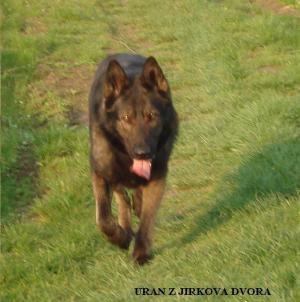


"Направете го заради мен:погрижете се за това,моята овчарка да остане работно куче,така както аз правех през целият си живот в името на тази цел" Max von Stephanitz 1864-1936
http://www.working-d...a%20Dvora%20CS/
http://www.working-d...ls/520770/..CS/
#400

Публикувано: 11 February 2012 - 05:11 PM
 DOGI_DOG, в 11 February 2012 - 01:28 PM, написа:
DOGI_DOG, в 11 February 2012 - 01:28 PM, написа:
Гледал съм много снимки, клипове с вълци и съм виждал вълк и вълчица на живо, но досега не съм видял вълк да има несъразмерна мастифоподобна глава, увиснали устни, много големи уши. Ако не е така поправете ме.
Това куче като структура и излъчване определено най-много се приближава до визията на европейския вълк от всички публикувани до момента в тази тема снимки ( изключвам вълчаците).


 Вход
Вход Регистрация
Регистрация Помощ
Помощ




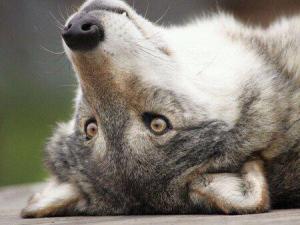
 Горе
Горе Цитиране +
Цитиране +
